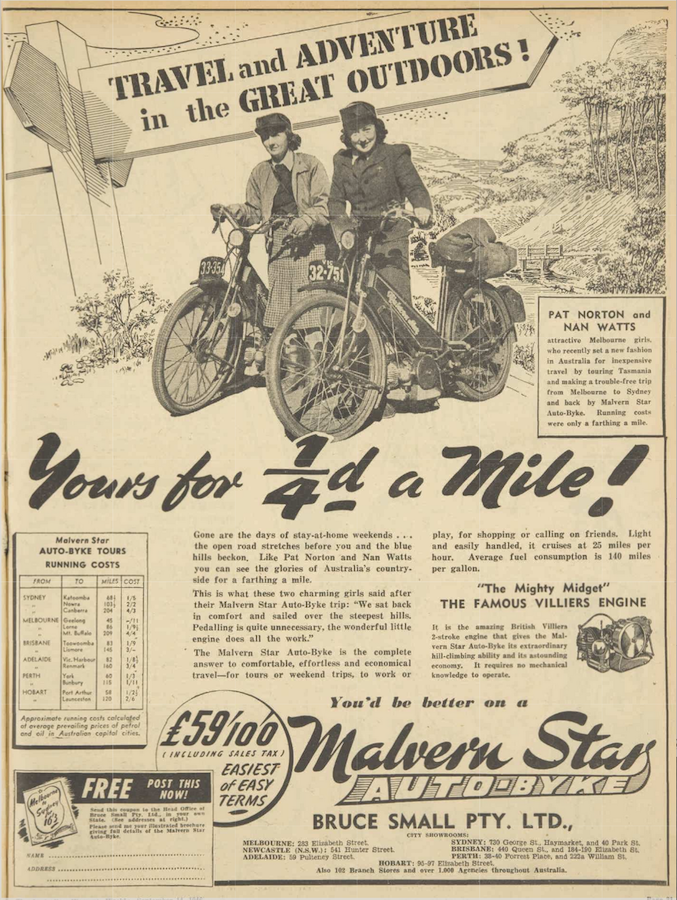Pat Norton first came to public notice when – at the age of 14 – she was known as ‘Nipper’ Norton in the Bondi Swimming Club. Only a year later she became the Australian Junior and Senior 100m Freestyle Champion. Despite Pat’s diminutive stature – barely 155cm tall and built like a jockey – she was selected for the 1936 Australian Olympic Swimming Team to contest backstroke.
No Dreamliners back then. It took 41 days for the team to make their way to Berlin; not the ideal preparation for an aspiring Olympian. Adding insult to injury the team was forced to stand on parade in the sun for two hours to await the arrival of Hitler and his entourage. The four girls in the Australian Team – which included Margaret Dovey, later to become Margaret Whitlam – were making friends with the only girl in the Argentinean Team when Hitler finally arrived. Pat later recalled: “It was my first good look at the man, and a more uninspiring-looking person would be hard to find.”
The youngster was eliminated in the semi-finals however back in Sydney at the 1938 Empire Games she won Gold in the 100m backstroke event; and anchored the Australian team in the 400m freestyle relay and the 300m medley relay; earning a Silver and a Bronze. And a more personal reason to dislike Hitler when the 1940 Olympics were abandoned, as – at 21-years-old – she’d hit her peak.
Pat had returned to work in a bank while teaching underprivileged children to swim when she married Bill Down, a pilot officer who fought against the Japanese in New Guinea before being killed in a training accident. This inspired Pat to take flying lessons – something Bill had always encouraged. Soon Pat had her own mono-winged de Havilland Moth Minor which she and her pal Nan Watts used for jaunts around Tasmania. Departing from Cambridge in 1947 they became the first females to fly across Bass Strait; a feat that almost ended in disaster when they were forced to put down in a cow paddock on reaching the mainland.
Quick off the mark was the advertising manager of Bruce Small Limited – manufacturers of the new Malvern Star Auto-Byke – a 98cc Villiers two-stroke powered moped. What better pairing than Pat and Nan to publicise the reliability of the little two-speed beastie with a ride from Melbourne to Sydney and return.
The impact of a full-page advertisement in a magazine such as the Women’s Weekly; which had a circulation of over 700,000 and claimed readership of well north of a million, was huge. So when these two charming girls stated that they “sat back in comfort and sailed over the steepest hills. Pedalling is quite unnecessary, the wonderful little engine does all the work,” it was easy to understand that the Auto-Byke was ‘ideal for shopping or calling on friends’.
What the advertising claims failed to mention was the hardship and tedium involved in this exhausting ride. With a cruising speed of less than 40km/h riding north from Melbourne would have been relatively pleasant but the hills around Yass, NSW, would have only been a precursor to the notorious Razorback. Calculated reckoning is, without refuels or comfort stops, riding time must have exceeded 24 hours and, assuming the young ladies took their beauty sleep, the return trip must have endured for the best part of eight days.
Both Nan and Pat continued swim coaching, with the latter eventually establishing her own school, occasionally competing in Masters swimming events. Pat was an ambassador at the 2000 Olympic Games in Sydney, but both she and Nan could well have been ambassadors for the MotoGP at Phillip Island such was their achievement in the spring of 1947.
Words and photography Peter Whitaker












